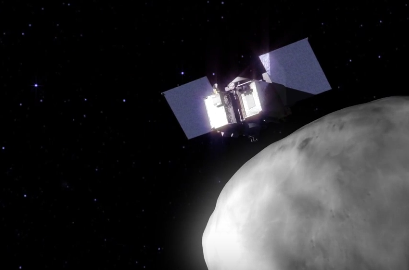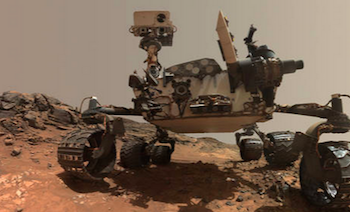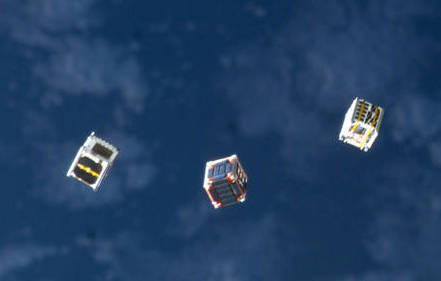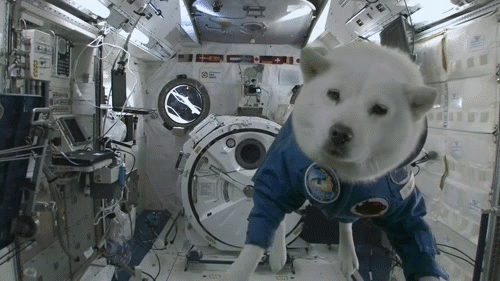Ever Wanted To Jumpkick Isaac Newton As Albert Einstein?




Ever wanted to jumpkick Isaac Newton as Albert Einstein?
Science Kombat lets you do just that.
More Posts from Secretagentpeptidebond and Others
Solar System: 2016 Preview
What do we have planned for 2016? A return to the king of planets. A survey of mysterious Ceres. More postcards from Pluto. Anyone who follows solar system exploration in 2016 is in for quite a ride. Last year was one for the record books – and now here are 10 things to look forward to in the new year. See also: what we have planned agency wide for 2016.
Juno Arrives at Jupiter

July 4, 2016 is arrival day for the Juno mission, the first sent expressly to study the largest planet in the solar system since our Galileo mission in the 1990s. Humans have been studying Jupiter for hundreds of years, yet many basic questions about the gas world remain: How did it form? What is its internal structure? Exactly how does it generate its vast magnetic field? What can it tell us about the formation of other planets inside and outside our solar system? Beginning in July, we’ll be a little closer to the answers.
OSIRIS-REx Takes Flight

The OSIRIS-REx mission, short for Origins-Spectral Interpretation-Resource Identification-Security-Regolith Explorer, sets sail for an asteroid in September. The spacecraft will use a robotic arm to pluck samples from the asteroid Bennu to help better explain our solar system’s formation and even find clues to how life began.
Dawn Sees Ceres Up Close

After an odyssey of many years and millions of miles, in December the Dawn spacecraft entered its final, lowest mapping orbit around the dwarf planet Ceres. The intriguing world’s odd mountains, craters and salty deposits are ready for their close-ups. We can expect new images of the starkly beautiful surface for months.
Cassini Commences Its Grand Finale

In late 2016, the Cassini spacecraft will begin a daring set of orbits called the Grand Finale, which will be in some ways like a whole new mission. Beginning this year and extending into next, the spacecraft will repeatedly climb high above Saturn’s poles, flying just outside its narrow F ring 20 times. After a last targeted Titan flyby, the spacecraft will then dive between Saturn’s uppermost atmosphere and its innermost ring 22 times. As Cassini plunges past Saturn, the spacecraft will collect rich and valuable information far beyond the mission’s original plan.
New Horizons Sends More Postcards from Pluto

We have stared slack-jawed at the images and discoveries from last year’s Pluto flyby, but the fact is that most of the data that New Horizons collected remains on board the spacecraft. In 2016, we’ll see a steady release of new pictures — and very likely some expanded answers to longstanding questions.
Mars Missions March Forward

With five of our missions continuing their Martian quests, 2016 should be a good year for discoveries on the Red Planet.
Mars Odyssey
Mars Opportunity
Mars Reconnaissance Orbiter
Mars Curiosity
MAVEN
Mercury Transits the Sun

A transit is a very rare astronomical event in which a planet passes across the face of the sun. In May, Mercury will transit the sun, on of only thirteen Mercury transits each century on average.
LRO Keeps an Eagle Eye On the Moon

The Lunar Reconnaissance Orbiter (LRO) will extend its run in 2016, scanning the moon’s surface with its sharp-eyed instruments, investigating everything from lava tube skylights to changes at the Apollo landing sites.
Spacecraft Fly Under Many Flags

Our partner agencies around the world will be flying several new or continuing planetary missions to destinations across the solar system:
Akatsuki at Venus
ExoMars
Mars Express
Mars Orbiter Mission
Rosetta at Comet 67/P
Technology Demonstration Missions Push the Envelope

We’re always looking for new frontiers on distant worlds, as well as the technology that will take us there. This year, several missions are planned to take new ideas for a spin in space:
Deep Space Atomic Clock
NODES
LDSD
Make sure to follow us on Tumblr for your regular dose of space: http://nasa.tumblr.com
Superfluids, a special type of fluid located below the lambda point near absolute zero, exhibit some mind-bending properties like zero viscosity and zero entropy. They are, in essence, a macroscopic manifestation of quantum mechanics. Here their thermomechanical, or fountain, effect is explained. This bizarre state of matter isn’t only found in laboratories, though. Scientists now think that superfluids may exist at the heart of neutron stars.
NIGHTJARS
You heard me.
Nightjars.
They are the BEST birds. Don’t come at me with BUT CORVIDS y’all know Corvids aren’t birds, they’re magic.
Anyway. Nightjars. Why nightjars, you might ask. Well let me tell you why.
I’ve already told you about the Tawny Frogmouth

But there is also the Great Eared Nightjar

Pennant-winged Nightjar

Standard-winged Nightjar. Yes, those are part of its wings. No, I don’t know WTF.

This oddly shaped stump. haha tricked you! It’s a Tawny frogmouth and baby.

Lyretail Nightjar. again, why. again, no idea.

Australian owlet-nightjar

Swallowtail Nightjar. Not so fancy? look again. that mustache.

Not into cute mustaches on birds?
Tell that to this Sickle-winged Nightjar.

Before it cuts you down with its badass wings.

Hey another stump - wait no it’s a FROGMOUTH

I’m not the first to have come to this conclusion.

says right there. BEST BIRD.

Ok whatever Indian Nightjar doesn’t care what you think about it.
If you don’t agree, you can sit over there and be wrong.
you know when you’re motivated but like, in the wrong way?? like “i’m ready to do all my laundry and clean the whole apartment and do dishes and vacuum and -” like ok champ that’s great but why don’t we focus on those two projects due monday first



Vacuum distillation of polyaromatic compounds could be fun.
In this case I only had to sit with an UV lamp to see when will my compound distill, since it had a bright blue fluorescence (as seen), while the side products of the reaction did not had any visible emission when irradiated with UV light.
Video Clip SS241672 (Dendritic Ice Crystal Growth)
Macro timelapse footage of Dendritic Ice Crystals Growing.
At sub zero temperatures, moisture from the surrounding atmosphere condenses almost immediately. The dendritic (tree-like) form of the crystallization is a natural fractal pattern.
As a rule, except in conditions where supercooled droplets are present in the air, frost will form only if the deposition surface is colder than the surrounding air. For instance frost may be observed around cracks in cold wooden sidewalks when humid air escapes from the warmer ground beneath. Other objects on which frost commonly forms are those with low specific heat or high thermal emissivity, such as blackened metals; hence the accumulation of frost on the heads of rusty nails.
© Francis Chee / Science Source
-
 dolby-5 reblogged this · 5 months ago
dolby-5 reblogged this · 5 months ago -
 3-tana liked this · 6 months ago
3-tana liked this · 6 months ago -
 robokappe reblogged this · 6 months ago
robokappe reblogged this · 6 months ago -
 godzillakingofthemonsters liked this · 6 months ago
godzillakingofthemonsters liked this · 6 months ago -
 higaki liked this · 6 months ago
higaki liked this · 6 months ago -
 popcoooooorn liked this · 6 months ago
popcoooooorn liked this · 6 months ago -
 esquizo3214378 reblogged this · 6 months ago
esquizo3214378 reblogged this · 6 months ago -
 esquizo3214378 liked this · 6 months ago
esquizo3214378 liked this · 6 months ago -
 mc2-e reblogged this · 6 months ago
mc2-e reblogged this · 6 months ago -
 mtr8080 liked this · 6 months ago
mtr8080 liked this · 6 months ago -
 kurowo liked this · 6 months ago
kurowo liked this · 6 months ago -
 lo-and-wo liked this · 6 months ago
lo-and-wo liked this · 6 months ago -
 mac13th liked this · 6 months ago
mac13th liked this · 6 months ago -
 katsuwojp liked this · 6 months ago
katsuwojp liked this · 6 months ago -
 katsuwojp reblogged this · 6 months ago
katsuwojp reblogged this · 6 months ago -
 rubbishcollector liked this · 6 months ago
rubbishcollector liked this · 6 months ago -
 kenchan0666 reblogged this · 6 months ago
kenchan0666 reblogged this · 6 months ago -
 gousouskmz reblogged this · 6 months ago
gousouskmz reblogged this · 6 months ago -
 tinycatman reblogged this · 6 months ago
tinycatman reblogged this · 6 months ago -
 tinycatman liked this · 6 months ago
tinycatman liked this · 6 months ago -
 hugehues liked this · 6 months ago
hugehues liked this · 6 months ago -
 pastel-sugar-kitten liked this · 6 months ago
pastel-sugar-kitten liked this · 6 months ago -
 asianplastic reblogged this · 6 months ago
asianplastic reblogged this · 6 months ago -
 z0paradiselost reblogged this · 6 months ago
z0paradiselost reblogged this · 6 months ago -
 z0paradiselost liked this · 6 months ago
z0paradiselost liked this · 6 months ago -
 dark-side-01 reblogged this · 6 months ago
dark-side-01 reblogged this · 6 months ago -
 wugelnolara liked this · 1 year ago
wugelnolara liked this · 1 year ago -
 quillandwand liked this · 1 year ago
quillandwand liked this · 1 year ago -
 magimag112 liked this · 3 years ago
magimag112 liked this · 3 years ago -
 depicted-time liked this · 4 years ago
depicted-time liked this · 4 years ago -
 adam-mickiewicz-is-overrated liked this · 4 years ago
adam-mickiewicz-is-overrated liked this · 4 years ago -
 mountain-phlox liked this · 4 years ago
mountain-phlox liked this · 4 years ago -
 poesiachiquita reblogged this · 4 years ago
poesiachiquita reblogged this · 4 years ago -
 op8989 liked this · 5 years ago
op8989 liked this · 5 years ago -
 ilikeslutsbitch liked this · 5 years ago
ilikeslutsbitch liked this · 5 years ago -
 ilikeslutsbitch reblogged this · 5 years ago
ilikeslutsbitch reblogged this · 5 years ago -
 annaluna02 liked this · 5 years ago
annaluna02 liked this · 5 years ago -
 mas-croquis reblogged this · 5 years ago
mas-croquis reblogged this · 5 years ago -
 castirondoll liked this · 5 years ago
castirondoll liked this · 5 years ago







